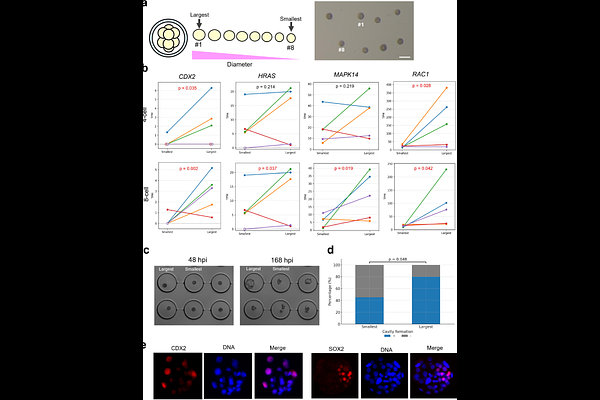Early transcriptional divergence underlies cell fate bias in bovine embryos

Early transcriptional divergence underlies cell fate bias in bovine embryos
Koyama, H.; Mashiko, D.; Kaneda, M.; Khurchabilig, A.; Sugimura, S.
AbstractDevelopmental plasticity, or the ability of early embryonic cells to contribute to multiple lineages, is traditionally considered equal among sister blastomeres during early cleavage. However, divergence may occur earlier than expected. We performed single-cell RNA sequencing of bovine embryos from the 2- to 8-cell stages to examine transcriptional asymmetry. While gene expression was uniform at the 2-cell stage, variability increased at the 4-cell stage and became pronounced by the 8-cell stage. At this stage, blastomeres showed heterogeneity in MAPK pathway genes (e.g., RAC1, MAPK14) and the trophectoderm marker CDX2. These differences were associated with blastomere size; larger blastomeres more frequently initiated cavity formation, a functional marker of trophectoderm fate. Our findings suggest that both molecular and physical asymmetries contribute to early lineage bias, and that developmental plasticity may be lost in an asynchronous, cell-specific manner before visible morphological events such as compaction.